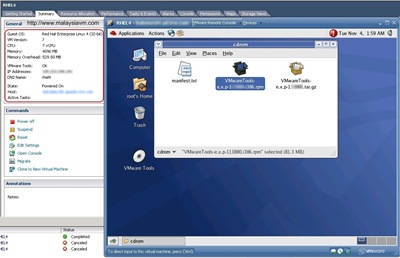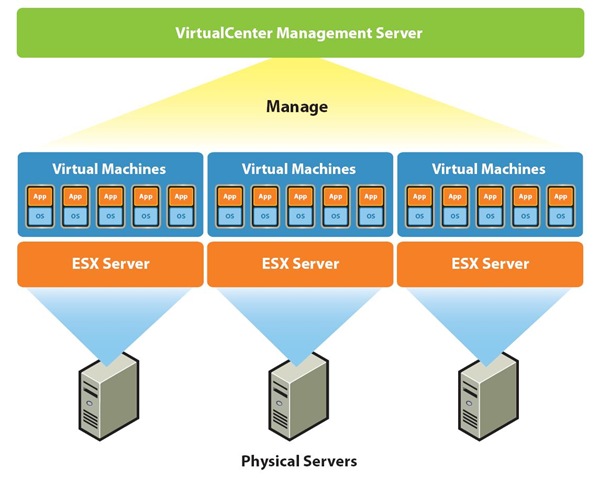
Virtualize for Efficiency, Higher Availability, and Lower CostsVirtualization is the single most effective way to reduce IT expenses while boosting efficiency and agility—not just for large enterprises, but for small and midsize businesses too. VMware virtualization lets you:
- Run multiple operating systems and applications on a single computer
- Consolidate hardware to get vastly higher productivity from fewer servers
- Save 50% or more on overall IT costs
- Speed and simplify IT management, maintenance, and the deployment of new applications
.jpg)
What is Virtualization?
Virtualization addresses IT’s most pressing challenge: the infrastructure sprawl that compels IT departments to channel 70% of their budget into maintenance, leaving scant resources for business-building innovation.
The difficulty stems from the architecture of today’s X86 computers: they’re designed to run just one operating system and application at a time. As a result, even small datacenters have to deploy many servers, each operating at just 5% to 15% of capacity—highly inefficient by any standard.

Virtualization software solves the problem by enabling several operating systems and applications to run on one physical server or “host.” Each self-contained “virtual machine” is isolated from the others, and uses as much of the host’s computing resources as it requires.

The Benefits of Server Virtualization
The benefits advantages of virtualization are nothing short of dramatic:
- Up to 80% greater utilization of every server
- Reductions in hardware requirements by a ratio of 10:1 or better
- Capital and operations expenses cut by half, with annual savings of more than $1,500 for each server virtualized
- Robust, affordable high availability
How Virtualization Works
The heart of virtualization is the “virtual machine” (VM), a tightly isolated software container with an operating system and application inside. Because each VM is completely separate and independent, many of them can run simultaneously on a single computer. A thin layer of software called a hypervisor decouples the VMs from the host, and dynamically allocates computing resources to each VM as needed.
This architecture redefines your computing equation, to deliver:
Many applications on each server. As each VM encapsulates an entire machine, many applications and operating systems can be run on one host at the same time.
Maximum server utilization, minimum server count. Every physical machine is used to its full capacity, allowing you to significantly reduce costs by deploying fewer servers overall.
Faster, easier application and resources provisioning. As self-contained software files, VMs can be manipulated with copy-and-paste ease. This brings unprecedented simplicity, speed, and flexibility to IT provisioning and management. VMs can even be transferred from one physical server to another while running, via a process known as live migration. You can also virtualize business-critical apps to improve performance, reliability, scalability, and reduce costs.
To discuss if Virtualization is the right fit your company, request your free consultation with Red Apple Solutions.
